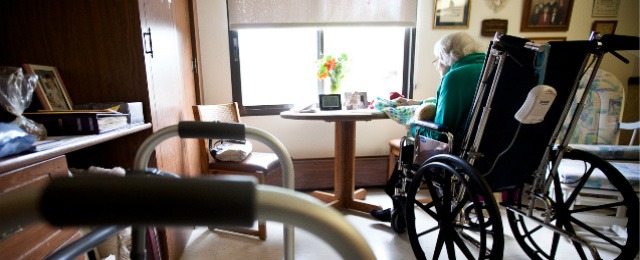Nursing Homes Offer Legislators Ideas For Cutting State Costs
by August 19, 2015 7:50 pm 232 views

The group that represents the state’s nursing homes and other long-term care providers Wednesday told legislators that the current payment system offers few positive incentives for lowering costs and improving quality, but it has some ideas of its own.
The Arkansas Health Care Association has been working with the American Health Care Association to create an incentive payment model that would reduce costs and increase the number of patients discharged to the community, representatives of both groups told the Health Reform Legislative Task Force, a group considering overall health care reform.
They said that no other state has such a model, which was developed by Dr. David Gifford, M.D., the American Health Care Association’s senior vice president of quality and regulatory affairs. Gifford was one of those testifying Wednesday.
The associations described a point system where long-term care providers would be scored based on reducing the number of long-staying patients, clinical measures of quality, staffing levels, the hospitalization rates of long-staying patients, and patient satisfaction. Providers would be ranked in one of five tiers based on performance with financial bonuses awarded to top performing providers.
Rachel Davis, Arkansas Health Care Association executive director, said that skilled nursing facilities could coordinate a variety of forms of care, including transportation and Meals on Wheels.
She also testified in favor of nursing home lawsuit reform, pointing to Texas, which she said has successfully lowered costs through tort reform enacted in 2003.
She said cutting nursing home spending would save the state only 13 cents out of every general revenue dollar cut because most of the money comes from federal sources and patient payments.
Association representatives told legislators that more than $1 billion has been invested privately in skilled nursing facilities, with locations in all Arkansas counties except Calhoun County. They are often the largest health care provider in a county and the county’s largest employer. In 2014, Arkansas paid $22.97 in general revenues per patient day for skilled nursing facilities. However those facilities lost $2.14 per patient day for patients on Medicaid, which is 67.1% of all nursing home patients. Under the law, the facilities are not allowed to make a profit on the direct care of patients.
The presentation came after legislators were warned of Medicaid’s increasing costs by representatives from The Stephen Group, a consultant hired by the task force. John Stephen, managing partner, and Richard Kellogg, senior consultant, told legislators that Arkansas will have to find $75 million to $100 million in new revenues each year to sustain the Medicaid program unless changes are made.
Those representatives testified that Arkansas spends too much on high-cost nursing home care instead of other alternatives and has no plan for coordinating care for high-cost patients. Nursing home costs equal about $800 million annually – far more than all other forms of long-term care combined.
Legislators on Thursday will hear from representatives from eight Medicaid managed care organizations, which are private companies that administer some Medicaid benefits. The Stephen Group studied managed care programs operated in 36 states. It submitted 24 questions to the managed care organizations about their experiences. Those organizations reported a range of improved access to health care services and cost savings.
But the Arkansas Health Care Association believes that, when it comes to long-term care, those same objectives could be accomplished through care coordination and provider efficiency. Davis presented a chart showing that, in Tennessee, managed care organizations merely added to what the state was spending on providing long-term care.
Afterwards, Herb Sanderson, interim director of AARP Arkansas, testified that families still provide most long-term care. He warned that the availability of caregivers will decline as the large baby boomer population ages and its members move from caregivers to care receivers. He said the ratio of 45-64-year-olds to those ages 80-plus was 7:1 in 2010. By 2030, it will be 4:1, and it will be 3:1 in 2050.
